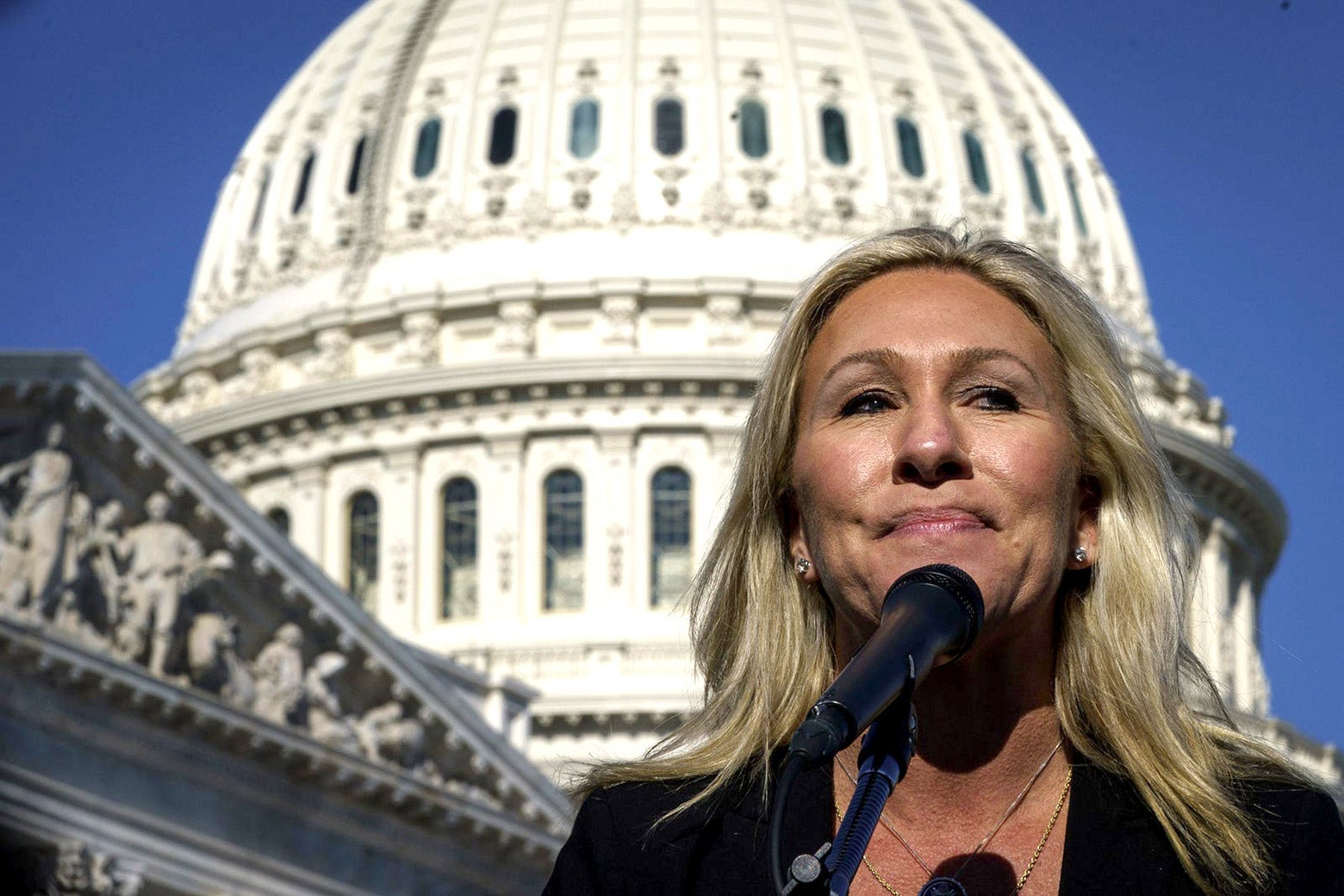Rep. Marjorie Taylor Greene posted a series of tweets railing against the White House’s coronavirus efforts on Thursday. In them, the publicity-hungry conspiracy enthusiast promoted her latest proposal—dubbed the Fire Fauci Act and the We Will Not Comply Act—demanding that Dr. Anthony Fauci be fired and making it known that she wouldn’t comply with “vaccine passports” and would seek to make the unvaccinated a protected class from discrimination.
In one of her first tweets on the subject, Greene shared a video of herself working out—specifically, doing a variation of the clean-and-press in a superset with butterfly pull-ups.
“This my Covid protection,” says the tweet’s text, accompanied by the hashtag #MakeAmericaHealthyAgain.
Her fitness routine in the clip quickly generated discourse. Greene’s form on the clean-and-press looked fine, but viewers were alarmed by her pull-ups—a swingy variation that can look bizarre to outsiders. Where a normal pull-up involves engaging your arms, back, and core to pull yourself up and over the bar, Greene was arching her back before swinging her body upward into a somewhat hollow position.
But Greene is a devotee of the CrossFit method, in spite of the brand disavowing her due to her penchant for racism and conspiracy theories. She clarified later that she was doing “butterfly pull-ups.” (Though, it seems, there’s no reason to do this unless you’re competitive in CrossFit.)
Whatever its fitness merits, this has considerably bigger problems as pandemic advice. Greene’s argument for exercise as a way to prepare your body’s defenses should you contract the coronavirus is tenuous, once you step outside academic research that explains the general benefits of being active and assess how the coronavirus has played out in the U.S. population.
In terms of overall benefits from exercising, a New York Times article from last March explains a plethora of that research: Moderate exercise does appear to boost the immune system, but strenuous activity might temporarily cull immune response since those cells disappeared suddenly from the bloodstream; then again, the cells may have rushed into the lungs and the GI tract instead of dying off, which would provide a boost in immunity.
If you’re new to exercise, though, jumping in hard might not be a good idea—neither is ignoring masking or any other hygiene protocols that prevent infection in the first place. And any workout—particularly tough, complex workouts like CrossFit or high-intensity interval training—can have negative consequences if someone is over-training, too fatigued, or not performing the moves correctly.
The idea that being “healthy” is all one needs to prevent an adverse outcome from the coronavirus is ableist, and it ignores the very real instances of young, active people getting really sick. And even if being active did limit the intensity of symptoms, or if someone was asymptomatic, that doesn’t mean it’s lessening the impact of the virus—especially on the cardiovascular system.
Several high-profile athletes have experienced complications from the coronavirus, particularly myocarditis after the initial infection has cleared up. A physician wrote of a woman in her 30s who died while on a run after a relatively mild case of COVID-19, and another cyclist in her 40s who experienced severe blood clotting. Mara Gay, a member of the New York Times’ editorial board, shared in May that she was experiencing intense, lingering COVID-19 symptoms despite being a runner. But it’s not just people who are athletic. In an observational study in Germany of 100 COVID-19 patients who were not athletes, 78 of the participants had persistent heart inflammation and other cardiac problems. (This study was corrected, but researchers confirmed that the link between COVID-19 and heart abnormalities was sound.)
Even if fit people weren’t having severe complications from the coronavirus, it’s not wise to promote physical activity as the solution, since they could still contribute to community spread and increase the risk for those who are equally or more vulnerable to COVID-19 complications.
Greene’s lifestyle “advice,” like her politics, is rooted in the fallacy of superiority. Don’t fall for it.

